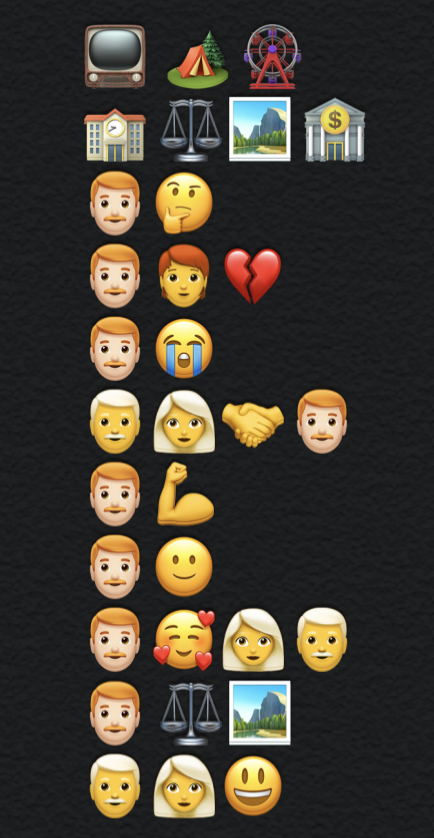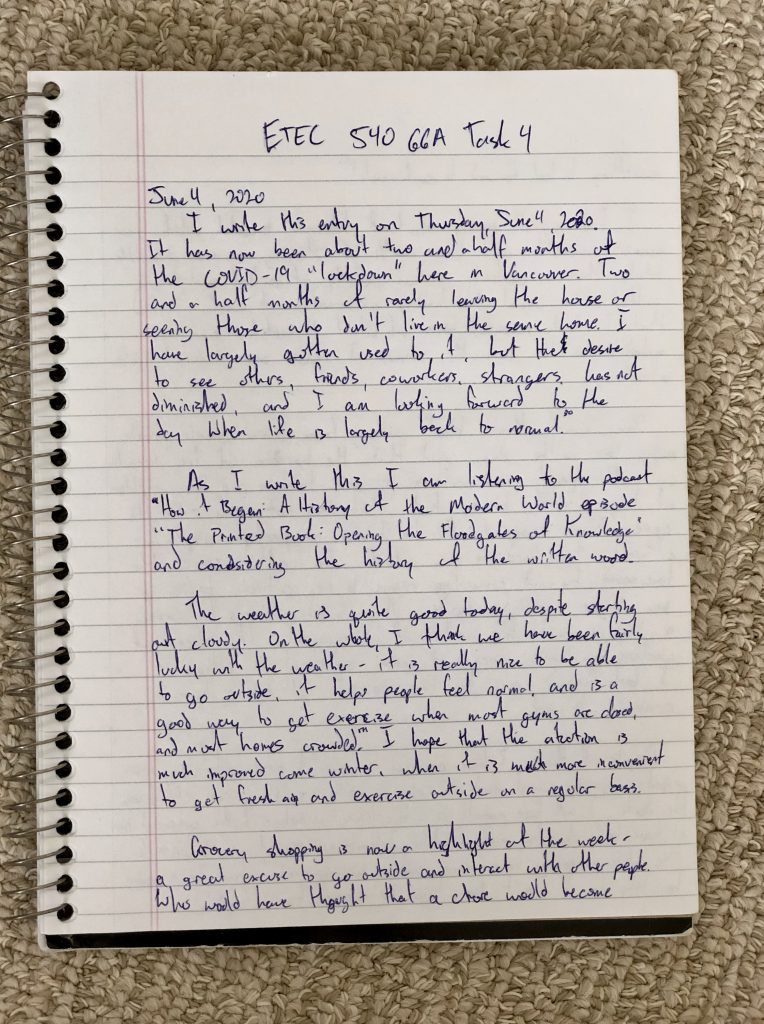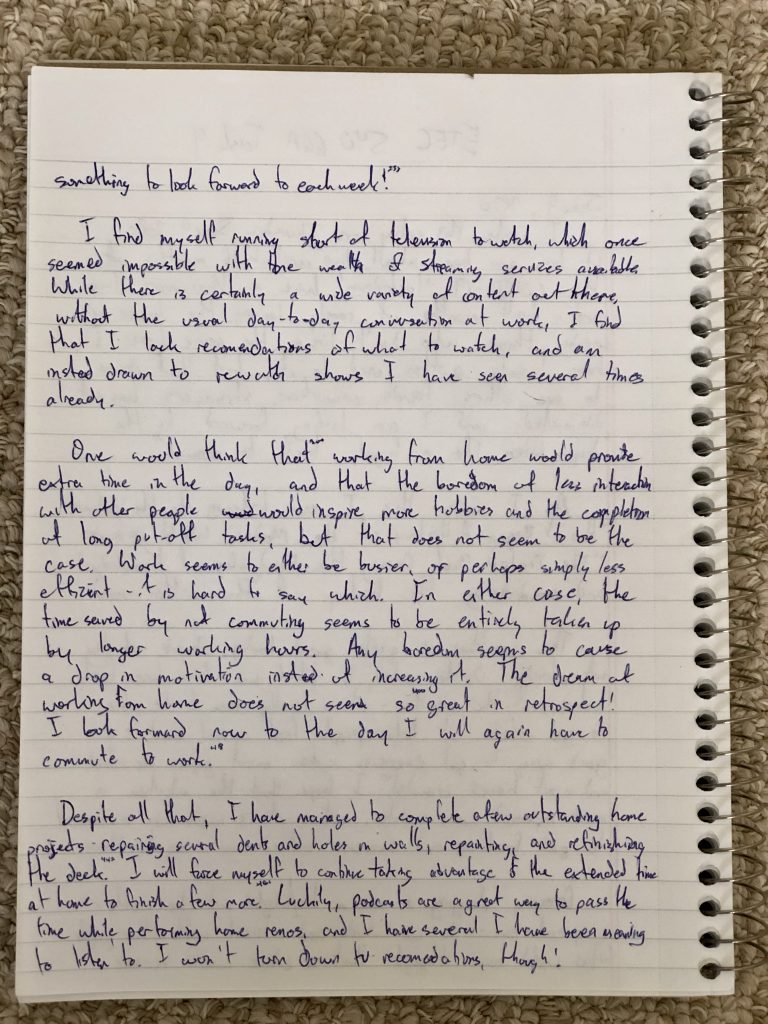Task 7 asks us to change the semiotic mode of Task 1. Task 1 was a picture representation of a common bag that we carry along with its contents, that are meant to be representative in some way of who we are. I have changed the semiotic mode to an aural one, and provided a description of my bag and its contents by recording the sounds they make when in use. Please have a listen:
Are you able to guess at all what the bag is, what any of the contents are, or what its purpose is? Does this recording give you any sense of who I am or anything about me? Listening to it myself, knowing what everything is, I think largely I would be unable to identify most of the objects, but there are a few that have very specific sounds that should give away the bag itself and its purpose if you recognize them.
The audio serves to help create an entirely different mental picture of the bag and its contents. I think on its own, it is not as useful at identifying the items than the picture was, but certain sounds seem to generate a more visceral emotional response when you hear and recognize them than a spoken description or image can. There are some other advantages to the audio versus the picture – compared to an image, if one were to only have the audio of the bag and its contents, you might be able to get a better sense of the materials that the items are made from. The fasteners also make distinctive noises that may not be clear on an image. I think the most powerful semiotic mode is a combination of modes embracing the multiliteracies (The New London Group, 1996) that we all posses – if I had combined the audio and the image along with a verbal description, you would get a much better sense of the contents. Even listening, then looking at the photo, and then listening again, you can likely identify most of the sounds, even if you didn’t get them at first. I think the most powerful aspect of modern text technologies is the ability to combine them with other semiotic modes and literacies – visual, audio, tactile, etc.
Here is a link to the original task if you would like to know what you listened to: Task 1: What’s in your bag?
How does your narrative about me and my bag change now that you know what it is?


